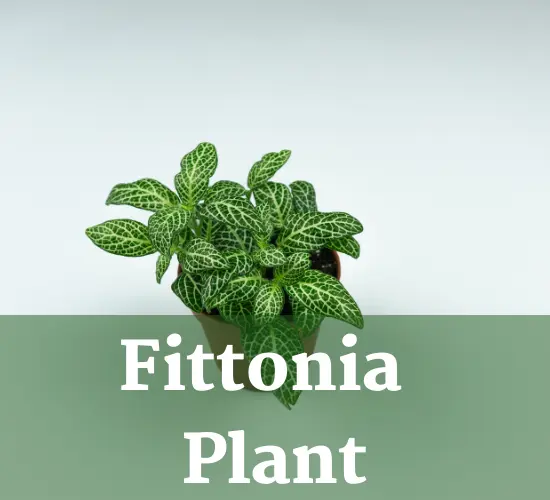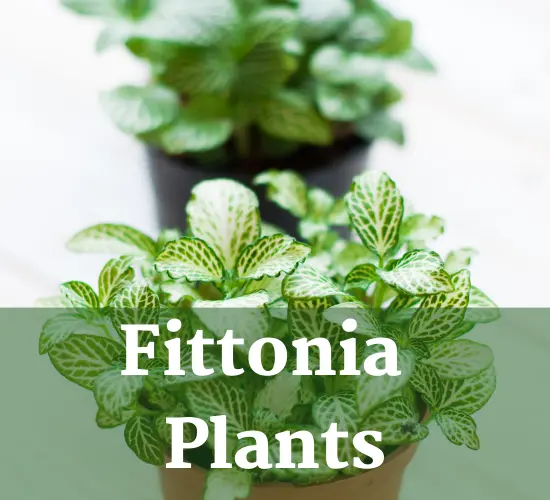Table of Contents
A Prem Fittonia Wick
Fittonia also known as the Nerve plant(Fittonia albivenis) is a captivating plant that can bring a touch of the tropics into any home. With its eye-catching patterned foliage and origins in the rainforests of South America, Fittonia is a compact plant that thrives as ground cover under the canopies of trees.
This article aims to provide readers with a comprehensive guide to mastering Fittonia care, enabling them to cultivate a thriving plant that showcases its striking foliage.
In this guide, we will delve into the origins and habitat of Fittonia, shedding light on its natural environment and the conditions it thrives in. We will then explore the various aspects of caring for Fittonia, including lighting requirements, moisture, and humidity preferences, and tips for optimal growth.
Additionally, we will address common issues that may arise during the care of Fittonia and provide troubleshooting advice to help readers overcome any challenges they may encounter.
By following the recommendations and techniques outlined in this article, readers will be equipped with the knowledge and skills necessary to create an ideal environment for their Fittonia plant, allowing it to flourish and showcase its stunning foliage.
Key Takeaways

- Fittonia, also known as the nerve plant, is a versatile and low-maintenance houseplant.
- Fittonia originates in South America, primarily found in Peru.
- Fittonia thrives in high levels of humidity and abundant rainfall, so consistent moisture is important.
- Provide bright, indirect light to prevent leaf burn and trim off severely damaged leaves if necessary.
Fittonia Origins and Habitat
Fittonia, a compact plant with striking patterned foliage, originates in South America, primarily found in Peru. In its natural habitat, Fittonia thrives as ground cover under the canopies of trees in the tropical rainforests of Peru.
These rainforests, known for their rich biodiversity and lush vegetation, provide the perfect environment for Fittonia to grow and flourish. As a ground cover plant, Fittonia spreads its creeping stems across the forest floor, creating a beautiful carpet of vibrant foliage. Its ability to adapt to its surroundings and thrive as a tropical ground cover is a testament to its resilience and adaptability.
The Peruvian rainforests, where Fittonia originates, are characterized by high levels of humidity and abundant rainfall. Fittonia has evolved to thrive in these conditions, making it an ideal plant for those seeking to recreate a tropical atmosphere in their homes.
Its preference for humid environments and its ability to tolerate a range of lighting conditions make it a versatile and low-maintenance houseplant. By providing the right amount of water, light, and humidity, Fittonia can bring a touch of the exotic into any indoor space, allowing plant enthusiasts to experience a sense of freedom and escape from their everyday surroundings.
Caring for Fittonia

When caring for this tropical plant, it is important to provide consistent moisture, as neglecting to do so can result in the leaves becoming limp and droopy, much like a wilting flower in need of water. Fittonia plants thrive in moist conditions, so it is crucial to water them regularly. Water thoroughly when the top 50% of the soil is dry, ensuring that the water reaches the roots. However, be cautious not to overwater, as this can lead to root rot. It is also beneficial to create a humid environment for Fittonia, as they prefer higher humidity levels. One way to achieve this is through misting the plant regularly. Use a spray bottle to mist the leaves, ensuring that the water droplets are fine and not too heavy. Another method is to place the plant on a pebble tray filled with water. As the water evaporates, it increases the humidity around the plant. Additionally, grouping humidity-loving plants together can create a micro-climate that benefits Fittonia’s growth. Finally, using a humidifier in the room where the plant is located can also help maintain the desired humidity levels.
To further emphasize the importance of consistent moisture and creating a humid environment for Fittonia, the following table provides some key watering and humidity tips:
| Watering Tips | Humidity Tips |
|---|---|
| Water thoroughly when the top 50% of soil is dry | Mist the leaves regularly |
| Avoid overwatering to prevent root rot | Use a pebble tray filled with water to increase humidity |
| Ensure the water reaches the roots | Group humidity-loving plants together |
| Use a spray bottle with fine water droplets for misting | Utilize a humidifier in the room |
By following these watering and humidity tips, you can ensure that your Fittonia plant remains healthy and vibrant, with its striking foliage thriving in its ideal environment.
Common Issues and Troubleshooting
One common issue that can arise when caring for Fittonia plants is the leaves becoming limp and droopy. This can be a sign of underwatering or a lack of humidity. To prevent this issue, it is important to ensure that the Fittonia plant is consistently moist. Water thoroughly when the top 50% of the soil is dry, and consider misting the plant regularly to increase humidity levels. Grouping humidity-loving plants together can also create a micro-climate that benefits Fittonia.
Additionally, it is important to avoid overexposing the Fittonia plant to direct sunlight, as too much light can burn the leaves. Providing bright, indirect light is the best option for this plant. If the leaves have already become limp and droopy, it is crucial to address the issue promptly. Check the soil moisture and increase watering if necessary. Consider moving the plant to a more humid environment or using a humidifier to boost humidity levels. Trimming any severely damaged leaves can also help the plant redirect its energy to healthier foliage.
When caring for Fittonia plants, it is important to be aware of two other common issues: preventing leaf burn and dealing with dry soil. Leaf burn can occur when the plant is exposed to too much direct sunlight or intense artificial light. To prevent leaf burn, it is recommended to provide bright, indirect light to the Fittonia plant. If leaf burn does occur, move the plant to a location with less light and trim off any severely damaged leaves.
Dry soil can also be a problem for Fittonia plants, as they prefer consistently moist conditions. To prevent dry soil, water the plant thoroughly when the top 50% of the soil is dry. If the soil has become dry, soak the plant in water for a few minutes to ensure it is fully hydrated. It is important to note that overwatering can also be detrimental to Fittonia plants, so it is crucial to find the right balance and avoid waterlogging the soil.
By addressing these common issues and troubleshooting them promptly, Fittonia plants can thrive and display their striking foliage to their full potential.
Frequently Asked Questions
Can Fittonia be grown outdoors in colder climates?
Growing Fittonia plants in cold climates can be challenging as they prefer warmer temperatures. Overwintering Fittonia plants indoors is recommended to protect them from frost and cold temperatures.
How often should I repot my Fittonia plant?
Fittonia plants should be repotted every 1-2 years. Signs of rootboundness include roots growing out of drainage holes, stunted growth, and the plant drying out quickly. Repotting promotes healthy root growth and ensures the plant has enough space to thrive.
Can Fittonia be propagated through leaf cuttings?
Fittonia can be propagated through leaf cuttings, a process akin to nurturing new shoots from the fragments of a beautiful tapestry. To ensure success, follow proper care tips such as providing adequate lighting, moisture, and humidity levels.
Are there any specific pests that commonly affect Fittonia plants?
Common pests affecting Fittonia plants include aphids, mealybugs, and spider mites. To prevent and treat these pests, regularly inspect the plant for signs of infestation, isolate affected plants, and use organic insecticidal soap or neem oil to control the pests.
Can Fittonia plants be grown in terrariums or closed glass containers?
Growing Fittonia in terrariums offers several benefits. The closed glass containers create a controlled environment, ensuring consistent humidity levels. This is particularly advantageous for Fittonia, which thrives in high humidity. Additionally, terrariums provide a visually appealing display for showcasing the striking foliage of Fittonia plants.